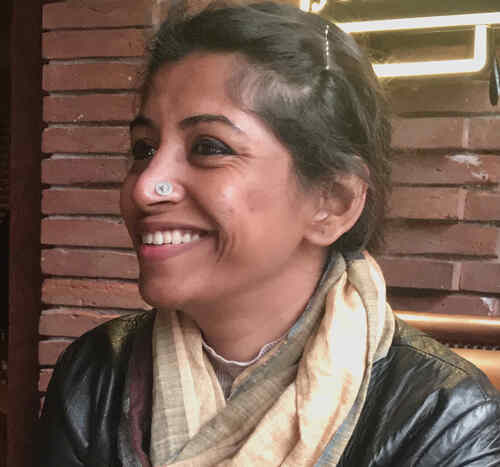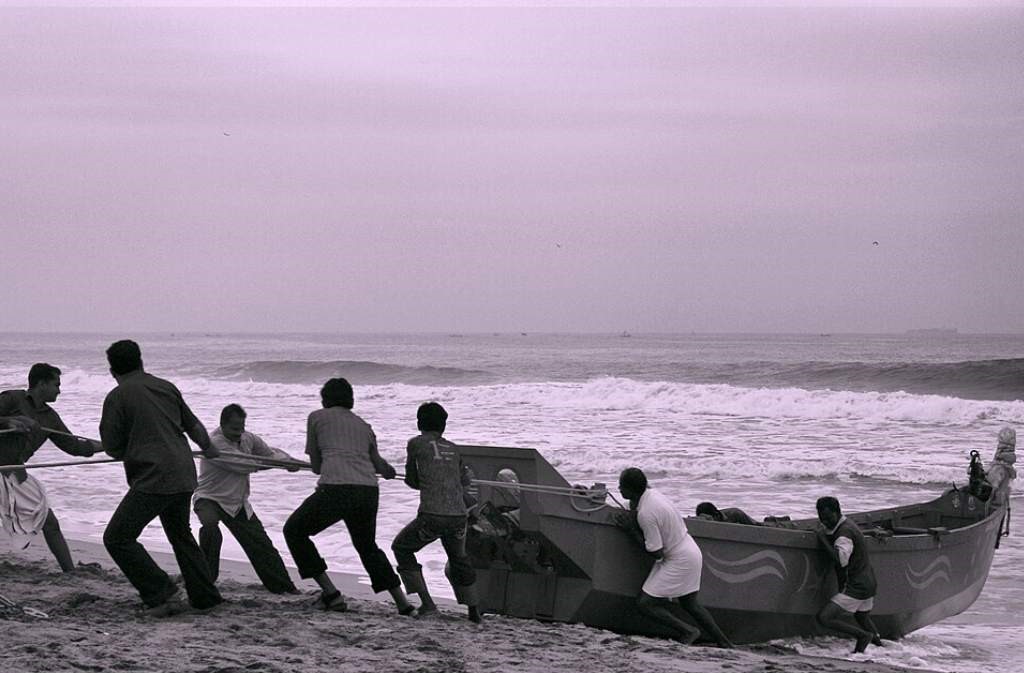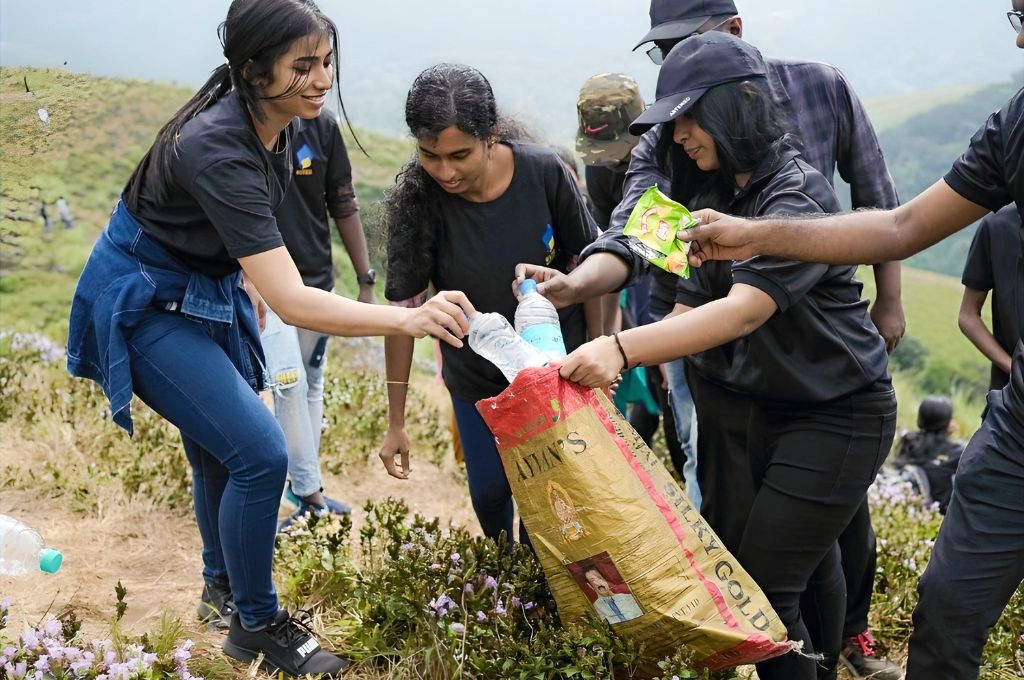The word ‘sabbatical’ is not popular in the Indian work lexicon. But the word ‘burnout’ is.
A health survey conducted by McKinsey Health Institute in 2023 found that Indians had the highest rate of burnout symptoms (59 percent) from a surveyed pool of more than 30,000 workers across 30 countries. The global average was 22 percent. The statistics for India were telling: Indians reported the highest levels of exhaustion (62 percent), cognitive impairment (67 percent), emotional impairment (58 percent), and mental distance (59 percent).
Burnout does no one good, and if we want to eliminate the word from our work vocabulary, we may need to give that other word—sabbatical—more play. A sabbatical denotes paid or unpaid leave for a period, from a few weeks to several months.
The need for sabbaticals is especially important in the development sector where resources are perpetually stretched. Leaders feel the pressure more keenly as they often bear the weight of the organisation. When they burn out, it isn’t the organisation alone that caves in; the people they serve are also adversely affected. And yet, social sector leaders find it difficult to step away from their responsibilities and take a sabbatical.
Vishal Talreja knows this well. The co-founder and trustee of Dream a Dream grappled with burnout and was compelled to take sabbaticals to deal with it. Discovering first-hand the life-changing benefits of extended time off, and alert to the reasons that keep people from it, he designed The Cocoon Initiative—a programme that funds sabbaticals in the social sector. The initiative, which is supported by the Chintu Gudiya Foundation, offers financial assistance to leaders so they can take a minimum of three months off work. Time away is expected to help them reflect on their mission and return to work with renewed stamina and purpose.
In this interview, Vishal and Donald Lobo, executive director of the Chintu Gudiya Foundation, talk to Smarinita Shetty and Joeanna Rebello Fernandes about the value sabbaticals can bring to the social sector; why more funders should put their weight behind the policy; and what organisations can do to bridge policy and practice.
Why are sabbaticals important?
Vishal: I have two perspectives on this. The first is from my own experience as a social entrepreneur and leader. For the first 10 years of running Dream a Dream, I didn’t believe I would ever get exhausted or burned out. But then I did. A day came when I just didn’t want to go to work. I packed a few clothes, got into a bus and, eight hours later, landed in Coorg. I switched my phone off, slept, and went on long walks, all the while seeking answers to the question: Why did I not want to go to work?
In the nonprofit world, especially in India, the pace of work only keeps increasing.
Many entrepreneurs are feeling burdened quicker and reaching burnout faster.
In the pursuit of creating transformative change in the lives of young people, I had run myself aground physically, mentally, and emotionally. Time away from work helped me see the blind spots in my leadership; the way I was building the organisation, its culture, systems, and processes; and the way I was showing up for my team. This week-long self-enforced break and the subsequent year-long investment in honest self-reflection led to a fundamental shift in my approach to work and leadership.
This is the power of a sabbatical. It helped me rebuild the organisation into the high-impact, thriving nonprofit it is today. But it wouldn’t have happened had I not been forced to take that break. Stepping away gives you a different lens on the work, the organisation, and your own leadership style.
My second perspective has been framed by entrepreneurs I have met and mentored. The regulatory and governance environment in India has become very difficult for nonprofits over the last decade. At the same time, there has been a big push towards new ideas, innovations, and scaling big and fast. Many entrepreneurs are feeling burdened quicker and reaching burnout faster. But their organisations lack the support systems to bolster them; they recognise that they need to take time off and rest and recalibrate, yet they’re unable to do it because the organisation has not reached a level of stability to allow them to take that kind of break.
Donald: The importance of long breaks from work has been established for a while. It’s common for tech companies to give employees a paid sabbatical of three to six months after they’ve worked for five to seven years. In the nonprofit world, especially in India, the pace of work only keeps increasing. I’ve seen leaders struggling with it, but neither they nor their organisations had the capacity or the structure to allow them to take a break. In the few cases that people did take one, they also took a financial hit. So, getting funders to promote sabbaticals is also one of the key objectives of The Cocoon Initiative.

How can leaders identify and deal with early signs of burnout?
Vishal: Ideally, we shouldn’t reach the stage of burnout at all; that’s too late already. A sabbatical is something leaders should look forward to, rather than something they’re forced to take because they’re burned out. It should be an intentional, conscious break they take every few years to thrive, flourish, recalibrate, and rest.
Having said that, we don’t have the systems and mechanisms to support sabbaticals yet. I’ve taken three sabbaticals over 23 years. I was forced to take two of those because I fell extremely ill. My body reacted to the exhaustion and burnout. I had gut issues; I was dealing with depression. When your body starts responding adversely, that’s a clear sign you need a break.
I also took a sabbatical when I sensed I needed to play a different role in the organisation. I had done what I could as a leader, but if I had to leapfrog to the next level of personal and professional growth, I had to do something fundamentally different, either by upskilling or adopting a very different lens to the work and my approach to leadership. It was this realisation that pushed me to take the sabbatical.
You could also be driven to it when you realise you don’t find joy or purpose in your work anymore. Planned sabbaticals can give us the time and space for authentic reflections.
Donald: Once you burn out, the recovery period is much longer. We should instead treat sabbaticals as part and parcel of life. But people aren’t even taking enough holidays. I think the board and senior leadership should nudge people to take breaks on a continuous basis, rather than just when they’re burned out.
What support systems are needed to encourage sabbaticals, both within the organisation and in the larger social sector ecosystem?
Donald: A positive culture of approval should be built around breaks and vacations. Such a culture would also strengthen the organisation by creating a system where other people can step in and take the organisation forward when the leader takes a break. However, this is hard to achieve without the help of a funding ecosystem.
With initiatives like Cocoon, we’re saying here’s something to get it started, and hopefully, over time, more and more funders—perhaps even your existing funders—can help you establish a sabbatical policy. Ultimately, provisions like this should fall within a normal funding cycle. It should be part of your regular HR policy and organisation budget. You shouldn’t need a third funder. Programmes like ours should not exist forever.
Vishal: From my own experience, in the early years of this work, there was a lot of guilt attached to taking a break, even a weekend off. This is due, in part, to the social and cultural norms in India, where we are constantly told we need to work hard because hard work will pay off in the long run. We are told to keep busy, so we won’t be depressed; to keep our minds occupied, because having free time is wrong.
The lack of financial stability that many leaders at the grassroots struggle with impacts their ability to take a break.
Now, that was probably true for a different generation. But in the fast-paced and complex world we live and work in today, hard work doesn’t necessarily lead to thriving; it could potentially lead to burnout and mental health challenges. It took me a while to understand this. There were months when I felt stuck at work, but I told myself, “Just keep doing the work, and you’ll get out of this phase. It’s just a phase.”
At the organisation level, as Lobo said, policies and budgets that can contribute to a culture of rest and rejuvenation are absent. And funders don’t necessarily take that approach to investment in leadership.
When I took my sabbaticals, I didn’t get a salary from the organisation. This meant that I didn’t have the funds to take care of a lot of my personal expenses. And I couldn’t support my parents with some of their expenses or medical emergencies. Our salaries are not high, and many of us do not have the savings to take care of anything unexpected that crops up. The lack of financial stability that many leaders at the grassroots struggle with impacts their ability to take a break, and they continue to function month on month because that monthly salary is critical for them.
What also holds leaders back from taking sabbaticals is the lack of second-line leadership. If there’s no one to take over in the leader’s absence, or if the organisation does not have the systems and processes needed to run the organisation and handle crises, the leader will keep getting pulled back to tackle urgent issues, and even mundane ones like sharing OTPs. All this brings the leader back into the organisation when what they need is a clean break.
The third problem is, in India, governance boards are typically advisory boards. This means they’re there to support the leader or the entrepreneur, but they don’t necessarily know what to do if the entrepreneur is not around. So, again, we need to build the leadership capacity of the board to take care of the organisation in the leader’s absence.
How do you put these support systems in place?
Donald: Most organisations won’t get it right the first time around, or even the second or third time, but their approach could be, “OK, this person is going to be away for the next three months; let’s make sure that we can continue at 80 percent capacity and have systems in place so that we’re not compelled to get in touch with them. Setting up processes and improving systems to make this happen will build much stronger organisations.
How can organisations bridge the gap between policy and practice to enable employees to take breaks?
Vishal: At Dream a Dream, we had a policy called Learning Leave where any team member could take 10 days off every year and do whatever they wanted—a no-agenda leave. We realised that only approximately 25 percent of the team was availing it. This led us to wonder if there was something in our culture that was preventing people from taking this leave. One reason was the guilt attached to taking leave for personal growth, which comes from social conditioning. The second was that even though people wanted to take leave, they were worried that managers or team members might not appreciate it.
We had to work with our team for a couple of years to make the shift from eyebrow-raising to celebrating when someone takes a break. This meant that we, at the leadership level, had to role-model it and start taking that leave ourselves. Simply having a policy on paper does not help; it needs to be built into the culture of the organisation.
How can funders help?
Vishal: Funders can proactively allocate funds for sabbaticals. If you’ve been funding an organisation for three to five years and have built a great relationship with the leaders and the team, why not extend an additional fund to help them create a sabbatical policy? In an ideal scenario, 5–7 percent of a funder’s allocation should go towards the team’s well-being, which could include sabbaticals.
Donald: What I tell nonprofits is, when you are given unrestricted funds, use them to invest in people, to make them happier at work, to increase salaries and benefits. Funders need to explicitly tell their grantees to spend 10–20 percent on their people, and paid sabbaticals and breaks could be a part of their allocation. We don’t do a very good job at that in the sector. That’s what our pitch to funders should be—give the nonprofit the flexibility to invest in what would make their workplace more fun and a lot safer and allow employees to experiment and learn for themselves.
What will it take to convince funders to come on board this initiative and, over time, build sabbaticals into their normal funding cycles?
Vishal: My sense is, it’s too early to start talking to other funders. We need to have a few stories out there of senior leaders who have taken sabbaticals and been impacted by them. We can then use that to go to other funders and say, this is the kind of impact it can have on the leader and on the organisation and its work, so it makes good business sense to invest in the well-being of the senior leadership. It means that they can come back with more growth, ideas, and innovations and create a bigger impact. We’ll have to show that connection.
We’re not going to be able to change everyone’s minds immediately.
We don’t want The Cocoon Initiative to exist in perpetuity. What we’re hoping is that organisations themselves will start seeing the impact of this and put policies in place, and then ask their funders to invest in it. The initiative will give them the evidence and stories to help them talk to funders.
Donald: We’re not going to be able to change everyone’s minds immediately. There’ll always be the early adopters, the midterm adopters, and the large percentage who will come on board slowly. In addition to demonstrating how useful this is, we must also talk about it extensively with other funders.
What kind of impact would you like to see this initiative have on the sector five years from now?
Vishal: For me, it’s about creating an attitudinal shift in the sector. It’s about moving away from the mindset of scarcity—of guilt about investing in yourself and having to sacrifice and work till your last breath to create change—and towards a mindset of abundance. The work we’re trying to do in the sector is complex; we’re dealing with very difficult issues, and we witness more failure than success. So, it’s important that we operate from a space of abundance and celebrate the breaks along the way. One of the things social sector leaders struggle with is, as soon as we climb a summit, we’re looking at the next summit. We don’t pause to acknowledge past victories. We should celebrate milestones, celebrate rest, because it’s a necessary step to be able to do better.
Donald: Even if we have 10–20 nonprofits instituting these policies, encouraging people to take time off, and investing in people much more than what we are doing today, and if we have three to five large funders supporting those nonprofits, that would be success to me. Having the sector take care of its own people proactively is essential, because you want them to recharge long before they come anywhere close to burnout, and in a way that’s financially, morally, ethically, and culturally acceptable to everyone.
—






